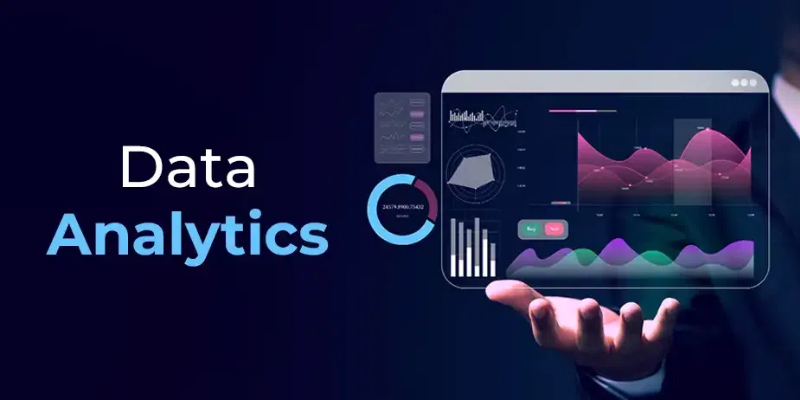What is Data Analytics?
Data Analytics involves examining raw data to extract meaningful insights and trends. It encompasses various techniques and tools to process and analyze data, transforming it into actionable information. The benefits include improved decision-making, increased operational efficiency, and enhanced customer experiences. As organizations increasingly rely on data-driven strategies, the demand for skilled data analysts continues to grow, making it a crucial field in today’s digital landscape. This blog will discuss what is Data Analytics. Explore Data Analyst Course in Gurgaon at FITA Academy, which provides good knowledge and placement assistance.
Process of Data Analytics
Data Collection
Data collection is the first step in Data Analytics, involving gathering raw data from various sources. This can include structured data from databases, unstructured data from social media, and semi-structured data from XML files. The quality of analysis heavily depends on the quality and relevance of the collected data. Common methods for data collection include surveys, sensors, and web scraping.
Data Cleaning
Data cleaning is crucial for ensuring accuracy and consistency. This stage focuses on eliminating duplicate entries, addressing missing data, and fixing inaccuracies. Methods like normalization and standardization are applied to ensure data consistency and uniformity. It often requires domain knowledge to make informed decisions about which data to retain and which to discard.
Data Exploration
Data exploration, or exploratory data analysis (EDA), involves examining the dataset to understand its main characteristics. Tools like histograms, scatter plots, and summary statistics are used to identify patterns, anomalies, and relationships within the data. This phase aids in generating hypotheses and directing subsequent analytical efforts. Visualization tools such as Tableau or matplotlib in Python are commonly used. Join the Data Analytics Course in Kolkata, which helps students in grasping complex concepts and datasets more efficiently.
Data Transformation
Data transformation entails reshaping data into a format that is optimal for analysis. This includes scaling, encoding categorical variables, and creating new features through feature engineering. Transformation ensures that the data is in a compatible format for machine learning models or statistical analysis. Techniques like log transformation and polynomial features are often applied.
Data Modeling
Data modeling is the core step where analytical models are built and tested. This can range from simple linear regression models to complex machine learning algorithms like neural networks. The choice of model depends on the problem at hand and the nature of the data. Training includes dividing the data into training and testing sets and applying methods like cross-validation to assess the model’s performance.
Model Evaluation
Model evaluation is critical to assess how well the model performs on unseen data. Metrics such as accuracy, precision, recall, and F1-score are used to evaluate classification models, while metrics like RMSE (Root Mean Squared Error) are used for regression models. Evaluation ensures that the model generalizes well and is not overfitting or underfitting the data.
Data Visualization
Data visualization conveys analytical results in a clear and impactful way. Insights are presented through charts, graphs, and dashboards, making them easy to understand and interpret. Effective visualization helps stakeholders understand the findings and make informed decisions. Tools like Power BI, Tableau, and matplotlib are popular for creating visualizations.
Deployment
Deployment involves integrating the analytical model into a production environment where it can provide real-time insights or predictions. This step requires collaboration between data scientists and IT teams to ensure smooth integration. Deployment also includes setting up monitoring to track the model’s performance over time and retrain it as necessary.
Maintenance
Maintenance is the ongoing process of monitoring the model’s performance and making necessary adjustments. This includes updating the model with new data, retraining it to improve accuracy, and refining features. Maintenance ensures that the model remains relevant and continues to provide accurate insights as the underlying data evolves. Enroll in a Data Analyst Course in Ahmedabad, which will guide you in making informed career choices.
Methods of Data Analytics
Qualitative Data Analytics
- Definition: Qualitative Data Analytics focuses on understanding phenomena through non-numeric data. It involves interpreting data based on descriptions, themes, and patterns.
- Techniques: Encompasses techniques like content analysis, interviews, and focus groups. The aim is to gain insights into behaviors, motivations, and attitudes.
- Applications: Useful for exploratory research, customer feedback analysis, and understanding complex phenomena where numeric data alone is insufficient.
- Benefits: Provides in-depth understanding, captures nuances, and can uncover unexpected insights.
Quantitative Data Analytics
- Definition: Quantitative Data Analytics involves analyzing numeric data to identify patterns, correlations, and trends. It focuses on quantifying relationships and measuring variables.
- Techniques: Includes statistical methods, surveys with closed-ended questions, and data mining. Techniques like regression analysis, hypothesis testing, and descriptive statistics are commonly used.
- Applications: Ideal for hypothesis testing, forecasting, and deriving actionable insights based on numerical evidence.
- Benefits: Provides measurable and objective results, supports data-driven decision-making, and allows for the analysis of large datasets.
Data Analytics transforms raw data into actionable insights, driving better decision-making and operational efficiency. Its benefits include enhanced understanding and strategic advantage in various domains. Explore the Data Analytics Course in Delhi to help you pursue your dream job with the right support.

